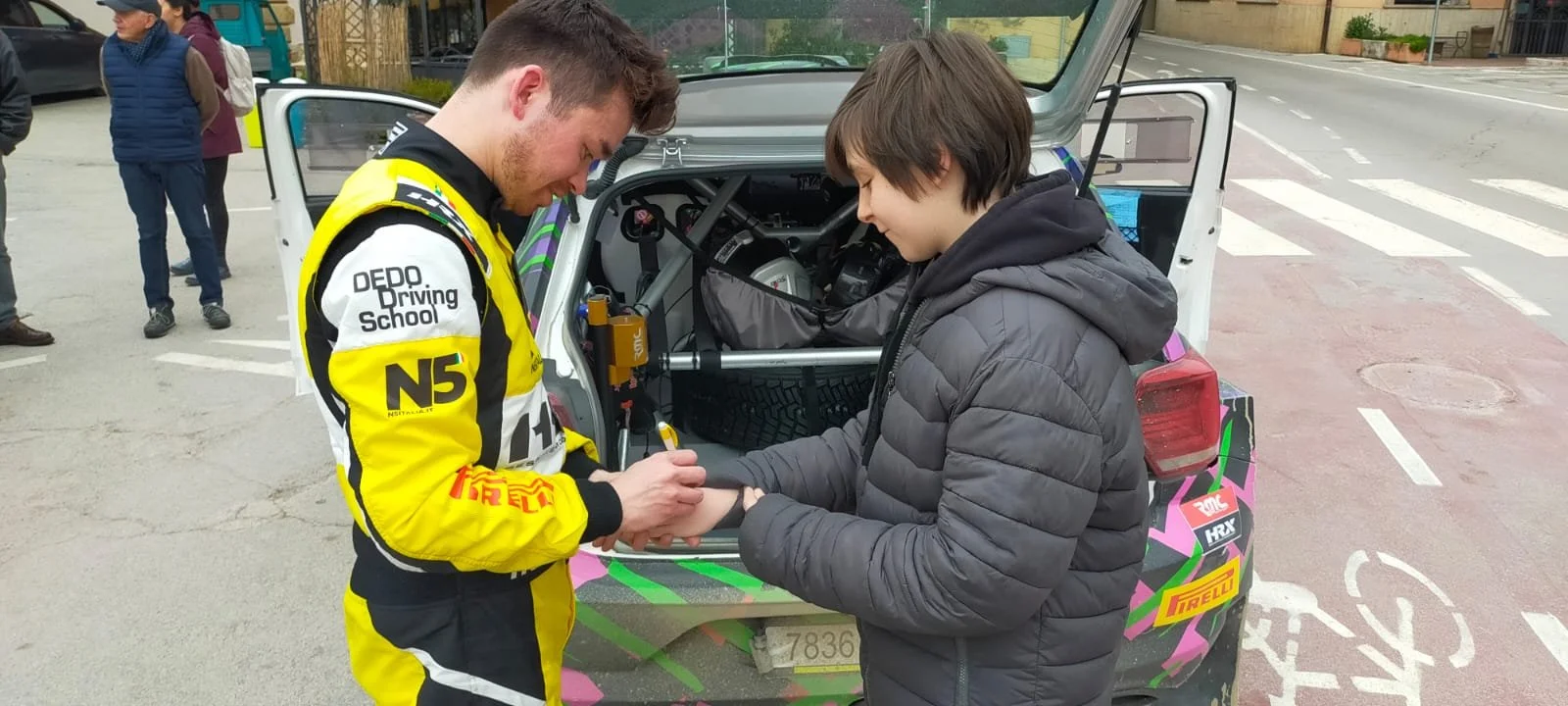Rockaway, NJ (March 27, 2023)- My first European event was quite an eye opening experience. Despite the outcome not being what I had hoped for, I certainly did not depart with a salty taste in my mouth. In fact, it made me even more hungry. It’s quite a different world out there and given this, I found it a tremendous asset to have an Italian codriver beside me to ease the transition. Here are some of my first-hand observations of how rallying is different in Italy, but I’m sure this can be applied to majority Europe as well.
Professional teams. Other than maybe a couple of 2wd entrants, the overwhelming majority of the field is run by paid professional teams who own the cars. The cars are then rented by contract to the competitors and are prepared to a very high standard. This enables the competitors to just arrive and focus on their own job at hand. While this concept isn’t new to many folks, I was surprised by how many different teams there were spanning multiple car and class types. My team, LPS Competition, ran 2 N5 and 1 R5 car.
Whereas the complete opposite exists in America. The driver typically owns the car, prepares it themselves and puts together their own team for events- usually consisting of friends and volunteers.Top equipment. Almost half of the field (28 entrants specifically in Rally Val D’Orcia) were in R5/ Rally2 machinery. I found it interesting of the 28 entrants, all were Skoda Fabias minus one Hyundai i20. The rest of the field were N5, Rally4 with a few Group N cars sprinkled in. Again, almost half the field were R5 cars, let that sink in.
Higher stakes. Since there is real money on the line, paid in various forms (sponsorships, contracts, prize purses, etc.) no competitors will ever give an inch and will even go beyond the sporting etiquette to win. For example, after the finish control of each stage, there is a designated area for tire checks to see if competitors had put nails/spikes in your tires.
Rally length. Due to the difficultly of organizing an event, most Italian events are less than 100km (62mi) of competitive stages. This means, right from the word ‘Go’, everyone is absolutely flat out. One mistake, and surely a puncture, puts you out of contention immediately.
Competitors towing other competitors out of snow banks, like we do at Sno*Drift, would certainly never happen across the pond.Recce. Or rather, official Recce versus unofficial Recce.
While there is a designated day and time for Recce within the regulations, it is unspoken knowledge for crews to unofficially drive the roads prior. Some have even been known to get out of the car, step on the inside ditch to verify if the corner is indeed cut-able or not. Recce speeds are also unmonitored, just don’t cause enough commotion for locals to complain to the organizers and everyone will be happy.
Rally organizers. Multiple times during the rally week organizers and volunteers told me, while shaking my hand and making direct eye contact, that it was an honor to have me present. Meanwhile, I’m thinking to myself, the honor is surely mine- trust me! All workers had a smile on their faces at all times. It seemed like the organizers were thrilled to put all this together even if it was for free. Now I’m sure one of the byproducts of their efforts were monetary, but it was not as front-and-center as what I’m used to and I don’t recall ever being genuinely thanked for entering an event.
Italian passion. Just like their food and wine, the public’s passion for rally is just as prevalent. The locals, both old and young, welcome competitors with open arms. Whether it’s on the start ramp in the center of a medieval village or just on the side of the road between stages, rallying is overwhelmingly positive in the public’s eye. Well, maybe the one Italian grandpa in his Fiat Panda we almost met head-on in recce, may have had a different opinion.
- Mark Piatkowski




